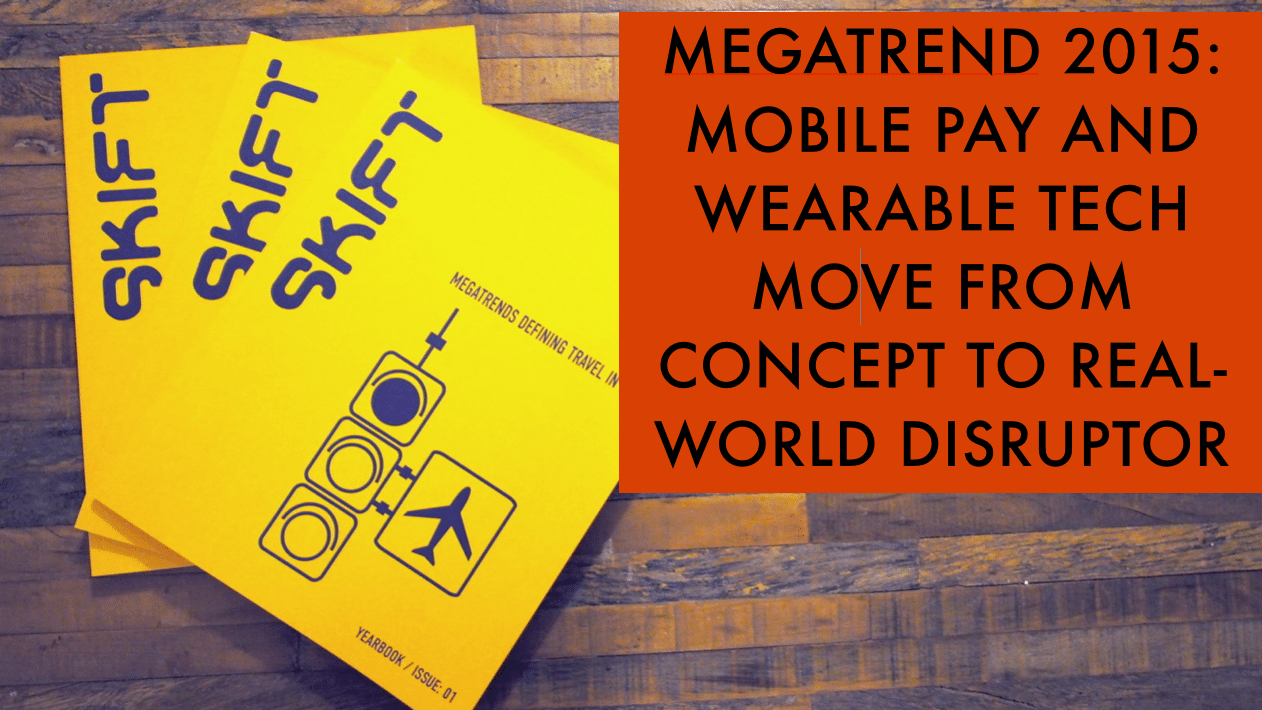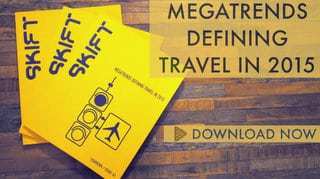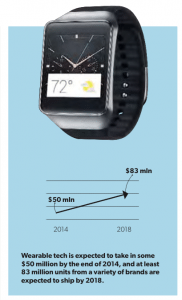Skift Take
Walking into a travel terminal, beginning a journey and then following it through, is poised to become an increasingly autonomous experience. It may well be marked not as much by lines at a kiosk but instead by the wave of a watch or band at a sensor, followed by an instant interaction in which seamless add-ons and ancillary sales could become a major market factor for travel brands who lean into the convergence of mobile payments and wearable tech.
Last month we launched our first ever magazine, “Megatrends Defining Travel in 2015“, where we identify the global trends in travel in 2015 and beyond, and focus on three emerging key themes: Mobile. Seamless. Experiential. Below is an extract from the magazine.
The travel industry will watch mobile payments and wearable devices newly combine, starting in 2015, creating powerful conversion-driving opportunities for brands.
To start, the market for U.S. mobile payments alone will expand from $52 billion in 2014 to $142 billion by 2019, according to recent reports by Forrester Research. Meanwhile, U.S. consumers have already undergone a transformation when it comes to mobile tech: only 19% of them owned a smartphone in 2009 but, in 2014, 66% have adopted the devices.
And so, if we can say that a majority of consumers now have a smartphone, and we track an uptick in engagement when it comes to mobile payments, this suggests the first important opportunity. That is, standardizing simple mobile-payment experiences stands to give airports, airlines, hotels, attractions, and other travel verticals new leverage when it comes to increasingly seamless in-trip and in-destination purchases.
Add to that the implications of wearable technology.
Smartwatches and the like have already succeeded in capturing significant territory in the marketplace. Wearable tech is expected to take in some $50 million by the end of 2014, and at least 83 million units from a variety of brands are expected to ship by 2018.
There’s the pending arrival of Apple Watch, in 2015, to consider as well. Forrester Research estimates that 7% of the more than 15 million adults who buy online in the U.S. are likely to purchase one. Equipped with Apple Pay, Apple undoubtedly hopes to stake a claim in the mobile-payment provider space. And they have the track record to suggest they can not only do this, but change the way consumers think about the process itself.
Similarly, Android Wear is in the works, with as many as 15 devices packing Google’s wearable tech system anticipated to hit the market by the end of 2015.
Facebook is rumored to be developing its own payment system, too, poised to deliver it via the social network’s iPhone messenger app. On this point, travel brands would do well to note that their products and services represent one of Facebook’s largest verticals: 42% of all stories shared on the platform’s timelines are travel related. Even more significant, 84% of Facebook’s users say travel timeline postings influence their future trip decisions.
For travel leaders that catch on to the trend, the convergence of mobile payments and wearable technology could well rewrite the way brands think about shaping travel experiences. It will certainly change they way they reach consumers — in terms of when and where, especially. And, if they can successfully meet the customer at the point of decision-making, the combination will alter and amplify how brands capture conversions from the mobile-pay connected, wearable-equipped traveler throughout the flow of a trip.
We want to thanks our magazine sponsors Virgin Atlantic, Amadeus and Egencia for making this possible.
Get Skift Research
Skift Research products provide deep analysis, data, and expert research on the companies and trends that are shaping the future of travel.
Have a confidential tip for Skift? Get in touch
Tags: megatrends 2015, mobile payments, Travel Trends, wearables


